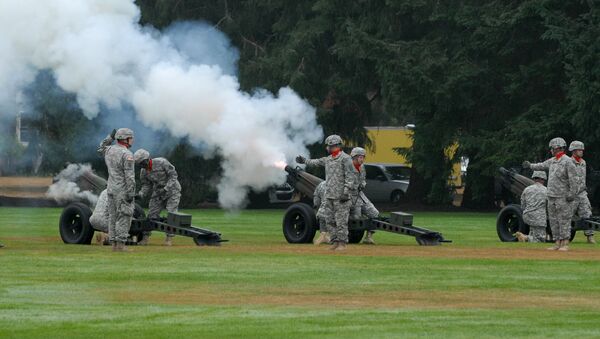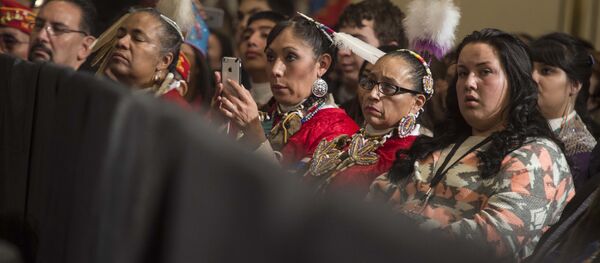"They use artillery shells and they use guns; they are constantly shelling. They are shooting and practicing with artillery that ranges from three miles to ten miles from their targets. And then they use big 50 caliber guns and everything else to practice. In our area, we are constantly under the sound of heavy artillery and machine guns being fired, all night long sometimes," Council Member Hanford McCloud said.
McCloud explained that the Nisqually tribe is always trying to push back against such practices at the US military base because they disrupt the tribe’s way of life.
"They are shooting at times of the year when we are fishing and the like; it disturbs the fish, the salmon and wildlife in general," he said.
McCloud went on to say that the US military does not discuss important issues with the nation, nor do they consider its concerns in undertaking any military action, but the tribe does not hesitate to resist.
READ MORE: Native Village in Alaska Seeks Alternative Means Than Federal US Funding
"They tried to bring over huge rockets about three years ago, and wanted to shoot them from our territory," he said. "They are called HIMARS… They wanted to shoot them across the prairie on their base but it was going to make an ultrasonic sound on our side of the reservation. And we said ‘no.’ We stopped it. We went to the military level and then we went to the congressional level with our representatives and our senators."
"They currently occupy two-thirds of our reservation which they condemned back in 1918 so it pushed a lot of our members around the area. As of 2018, we have just over 1,000 members and we have 550 people that live on or around our reservation locally. And of 14,750 acres, like I said, two-thirds were confiscated and condemned by the government," he said.
The Nisqually Indian Tribe’s reservation currently is about 500-600 acres, and the tribe is buying back land around it, McCloud said.
"We are in the middle of the base, and they own all around us. It was a way for them in the early 1900s to keep an eye on us … They should be removed or at least give-back half of that land to us that they don’t use," McCloud noted.
Another pressing issue facing the nation is concerned about their ancestral land and graves that are being disregarded, the Tribal Council Member continued.
"Our gravesites and traditional areas that we had that are being desecrated. Desecrated means they are building on top of them and they are not really recognizing the areas of importance if it was a village site or if it was a grave site. Our village sites are marked but we never mark our gravesites. Our ancestral remains are buried in the places that we don’t know about. So, an idea is to make sure that when you are building that you actually have somebody there who can identify those things. It’s the working relationships that we don’t have with the cities around us and some federal agencies that we work with," he said.
READ MORE: Migrant Caravan Shows the Crisis Has Been Building in US — Scholar
The US federal government recognizes 567 Indian nations in 33 states, including 229 in Alaska. Native American tribes are further recognized by their respective state governments, according to the NCAI.
Established in 1944, the NCAI is the oldest and largest non-profit organization representing US native tribes and the interests of tribal governments and communities.




